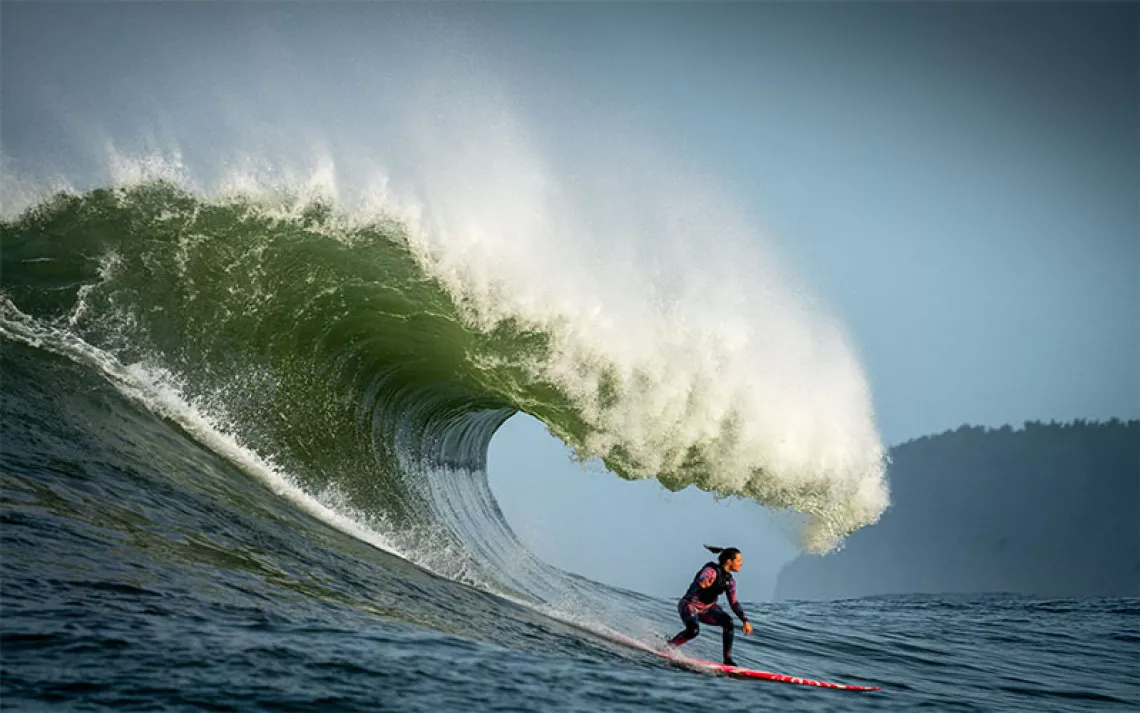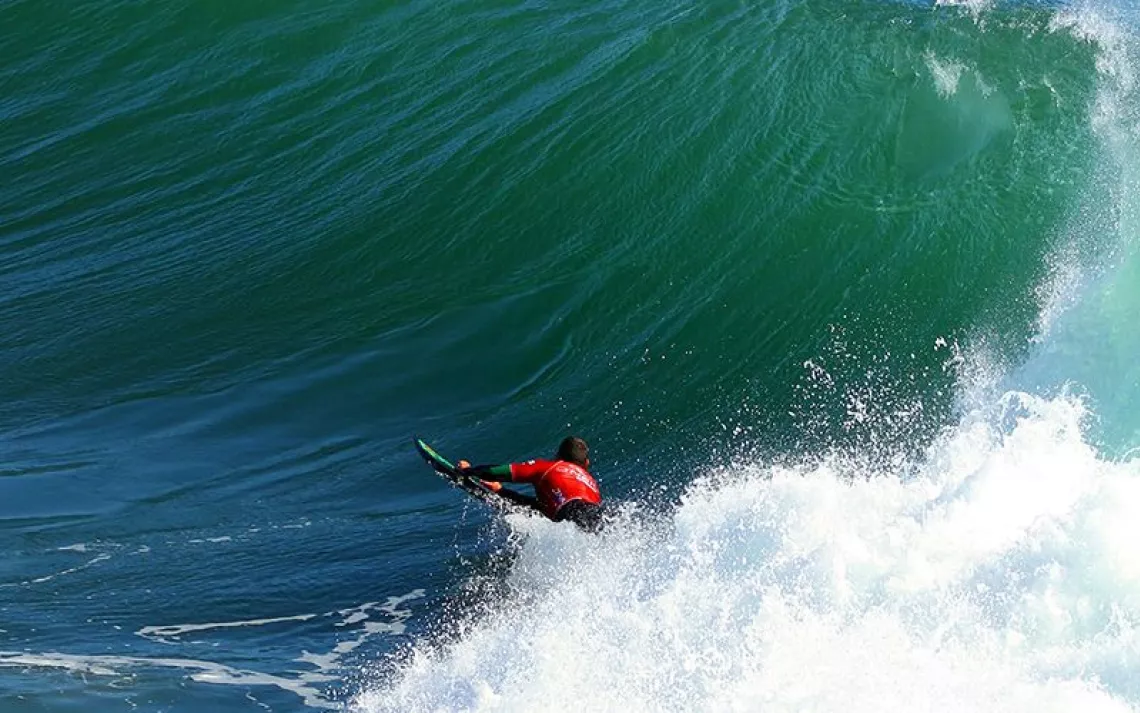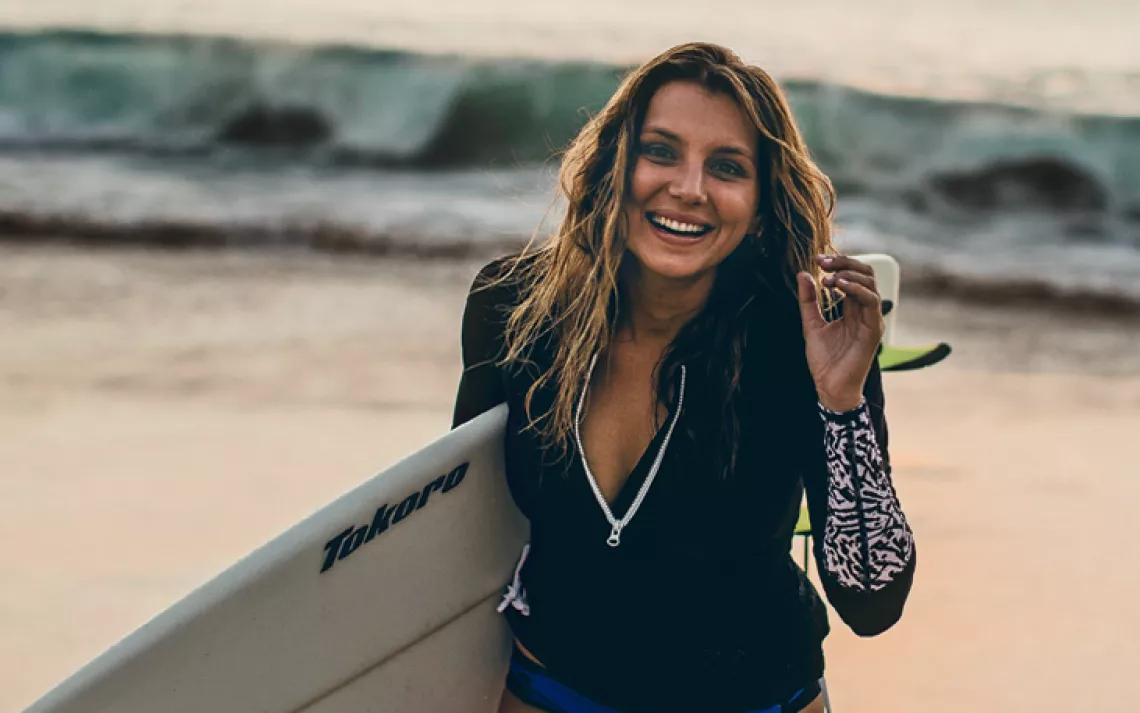Surfing Sustainability
Review of sustainable surfing goods.
The best way to minimize your surfing footprint is by buying used stuff, moving closer to the ocean, and carpooling to the break. But when prudence dictates buying new, look for sustainably sourced and upcycled products and bombproof fabrication, because long-lasting gear means less landfill fodder. While you’re at it, consider picking up a membership to the Surfrider Foundation, a kind of Sierra Club for the sea.
By Brad Rassler
July 2, 2015
Grain Surfboards
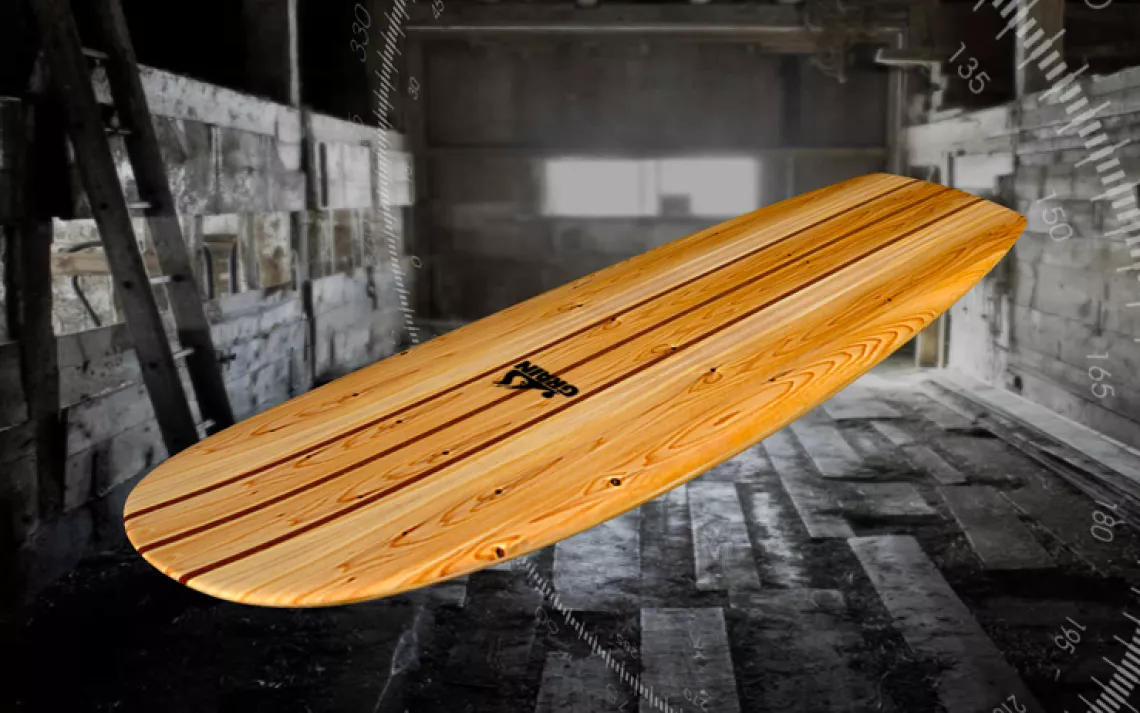
Ask around about environmentally and socially righteous surfing equipage, and before long someone will mention the all-wood hollow boards made by Grain. We tracked down Grain’s co-founder, Mike LaVecchia, to ask him about how he designs and shapes lively boards out of sustainably-grown cedar and plant-based epoxy, and we received an education in ethics and the history of wood boards. Grain's new Mr. Simmons is a Jon Wegner design inspired by the legendary Bob Simmons, inventor of the hydrodynamic planing hull. Order a custom board (a three-month wait), build your own at home using plans and a kit, or jump into a weeklong workshop where you’ll shape a board under the supervision of pros. Mr. Simmons: 5’5” – 6’3”; Kit and plans: $99+; Workshop: $1700+; Custom Build:$2,300+, grainsurfboards.com
Photo courtesy of Grain Surfboards
Rareform Surfboard Bags

Use a board bag to guard your prized possession from land-based dings. Rareform upcycles spent billboard vinyl from companies like Clear Channel into a sassy palette of variously sized board covers. Think of Rareform’s products as plastic bags with a social conscience. $80 - $120, rareform.com
Photo courtesy of Rareform
Matunas Board Wax

Got board, got board wax. Eschew the petroleum variety, and use an earth-friendly analogue made from plants. Matunas waxes are made from greens harvested from a 25-acre organic farm, and the clay-based bars contain—among other delectables—jasmine, apricot tree sap, raspberries, and calendula. Non-toxic and biodegradable. $1.75 for 90 grams, matunasco.com
Photo courtesy of Matunas Wax
Raw Elements Sunscreen
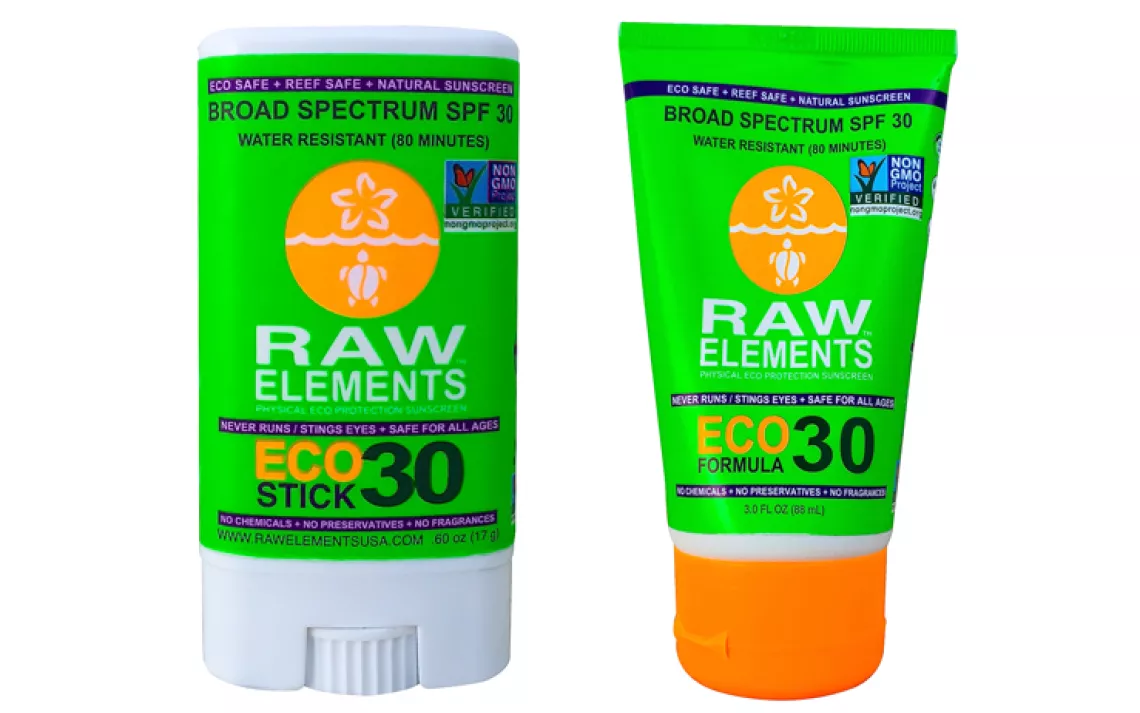
"I don’t want skin cancer," writes the inventor of Raw Elements sunscreen, a former lifeguard. Neither do you. The company’s biodegradable, cruelty-free, and reef-safe formula, available in either stick or lotion form, saves your skin and the ocean, too. The broad-spectrum sunscreen contains non-nano zinc oxide and a blend of all-organic additives like hempseed oil, coffee, mango butter, and beeswax. Raw Elements even gets an “A” rating from the consumer advocacy non-profit, Environmental Working Group (EWG). Stick: $16 for .60 ounces; Lotion: $19 for 3 ounces rawelementsusa.com
Photo courtesy of Raw Elements
Crow Haley Leash

Crow Haley made his first leash in ‘79, and he still sews each one by hand, using a coveted (and rare) Brother sewing machine, heavy-duty webbing, and 16-pound thread. Haley doesn’t much truck with fashion colors, he doesn’t have a website, and the Chinese characters on his leash’s ankle straps translate to “Made in the U.S.A.” $23 - $26, 6’ to 10’, comp and standard. Available through Encinitas Surfboards
Photo courtesy of Crow Haley
Pushfin Surf Fins
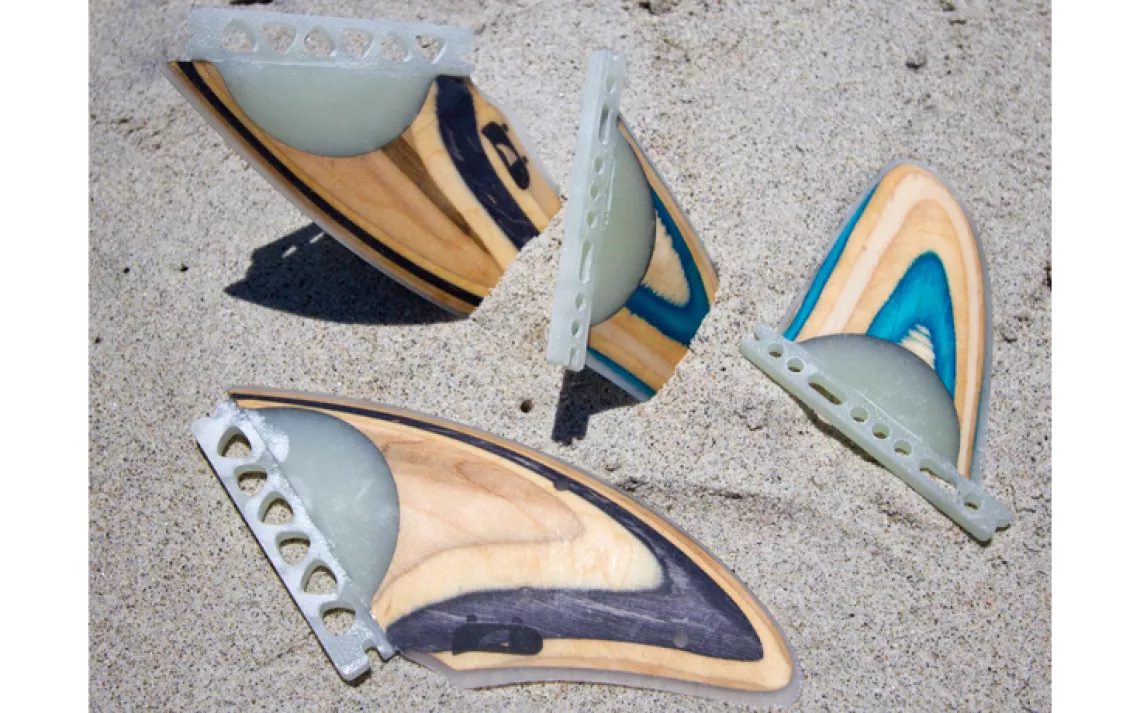
Pushfins was born when Christian Sellers scavenged the deck of an old skateboard to repair a buddy’s busted skeg. Today Sellers and his wife Emily upcycle the seven-layer maple from used or defective skateboards, which they lay up with plant-based epoxy and fiberglass leftovers from a bevy of board shapers. Sellers describes his fins as lighter than those made with fiberglass, and with less rebound. Fin sets: $132 - $161, pushfins.com
Photo courtesy of Pushfins
Patagonia Wetsuit

Probably best known for its climbing heritage, Patagonia has been stoking the surfing psyche for decades. The company’s founder would probably tell you to consider used gear first, but you might want to look at the new R2 Yulex/Nexkin Front-Zip wetsuits, concocted from a 40/60 blend of traditional neoprene and a bio-rubber made from the guayule plant. Surfers say it looks like neoprene, feels like neoprene, performs like neoprene, but smells way prettier. $389. patagonia.com
Photo courtesy of Patagonia
Brad Rassler has written about the confluence of culture, sustainability and adventure for publications such as Ascent, Climbing, Alpinist, Tahoe Quarterly, Powder, Sea Kayaker, and others. See more of Brad’s work at Sustainable Play, and find him on Twitter: @sustainableplay.
More articles by this author- Keywords:
- surfing
- lifestyle
- buyers' guide
 The Magazine of The Sierra Club
The Magazine of The Sierra Club
